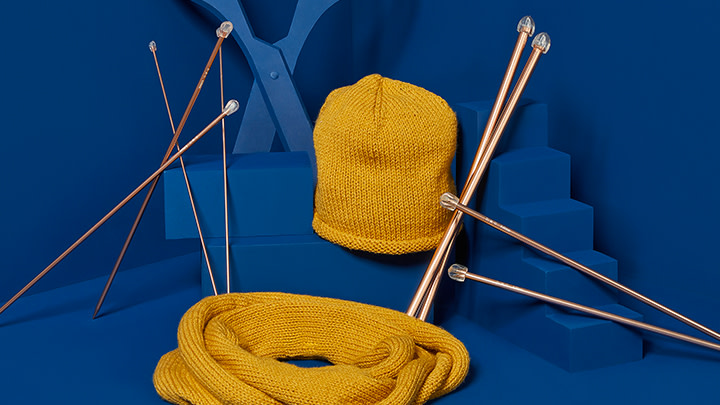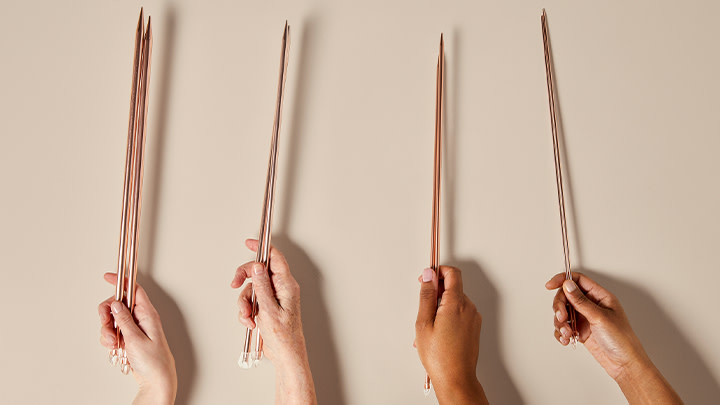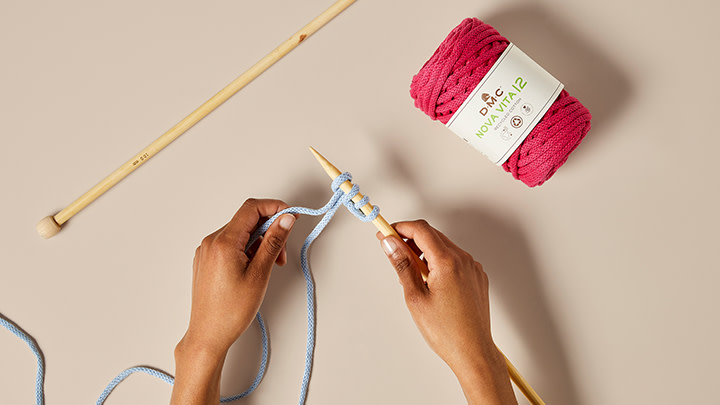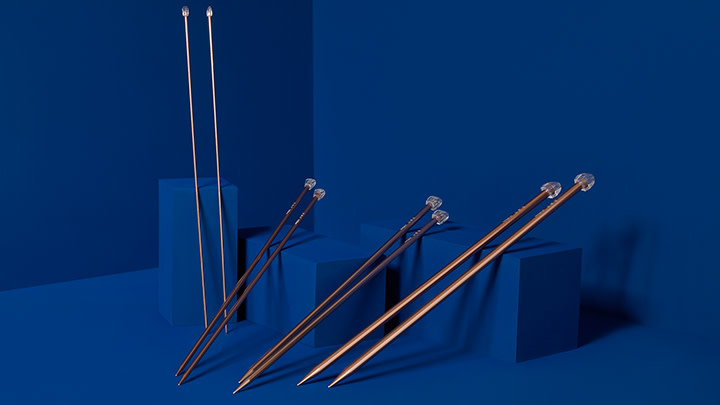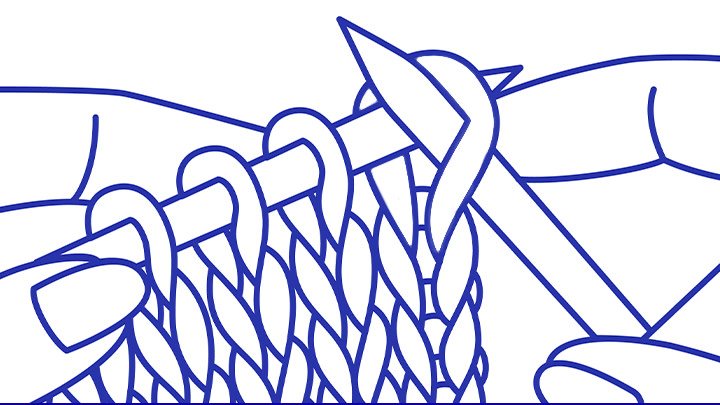La tensione di un lavoro a maglia, nota anche come 'campione', si riferisce al numero di punti e di righe (o ferri) lavorati su una determinata misura, di solito un quadrato di 10x10cm/4x4in. La tensione è determinata dalla dimensione dei ferri da maglia e dal peso del filato utilizzato, nonché dal modo in cui si tengono i ferri e il filato durante il lavoro.
Quanto è importante la tensione nel lavoro a maglia?
La tensione richiesta per un modello è normalmente indicata all'inizio delle istruzioni ed è importante che ti assicuri di ottenere la stessa tensione prima di iniziare il lavoro, altrimenti il tuo progetto finito potrebbe essere troppo piccolo o troppo grande. Per ottenere la tensione corretta si possono fare diverse prove, cambiando ogni volta la misura dei ferri da maglia fino a trovare la corrispondenza perfetta. Controllare la tensione è la prima operazione importante da fare nella preparazione di un lavoro a maglia e riguarda tutti principianti o esperti, quindi non avvilirti se non ottieni subito la tensione corretta.
Come fare un campione per conoscere la tensione di un lavoro a maglia
Usando il filato e i ferri indicati nel modello, realizza un quadrato con lo stesso punto utilizzato nello schema o indicato per il campione. Dovrai prendere le misure su un quadrato di 10 cm di lato, per questo motivo devi realizzare un quadrato più grande in modo da avere un bordo intorno alla parte da misurare. Intreccia le maglie (chiudi il lavoro) e stendi il campione su una superficie piana senza allungarlo.
Come controllare la tensione del tuo lavoro a maglia
Dopo aver lavorato il campione come indicato, stendi un righello in orizzontale su una riga di punti e segna i 10 cm (4 pollici) con degli spilli. Poi ripeti l'operazione in verticale e segna 10 cm (4in) di righe. Conta il numero di punti e di righe tra gli spilli e prendi nota.
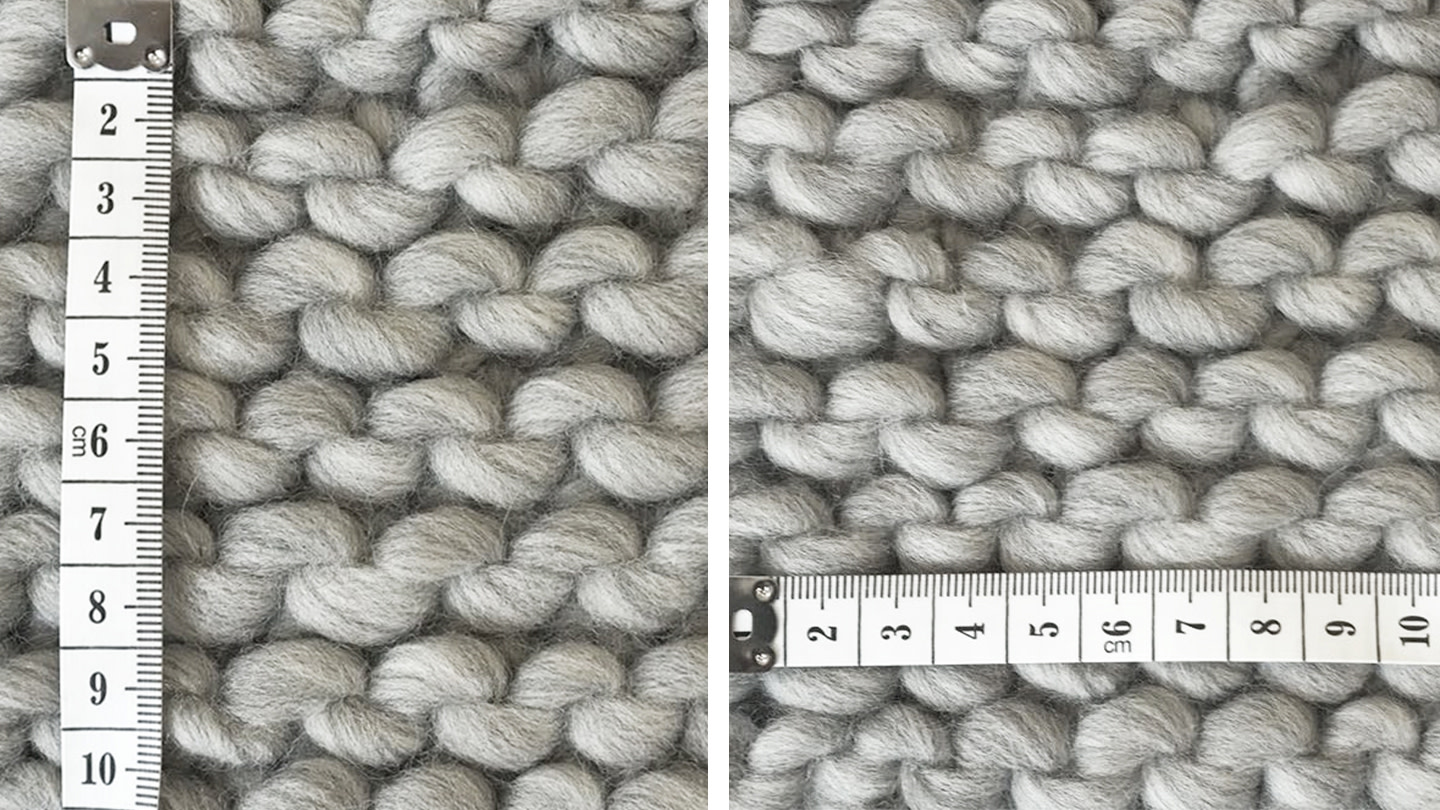
Come cambiare la tensione di un lavoro a maglia
Se i punti e le righe sono più numerosi di quelli indicati nel modello, fai un altro quadrato lavorando con dei ferri più grandi. Se i punti e le righe sono inferiori a quelli indicati nel modello, dovrai fare il secondo quadrato con dei ferri più piccoli. Inizia a lavorare lo schema o modello solo quando riesci a ottenere la tensione indicata.



